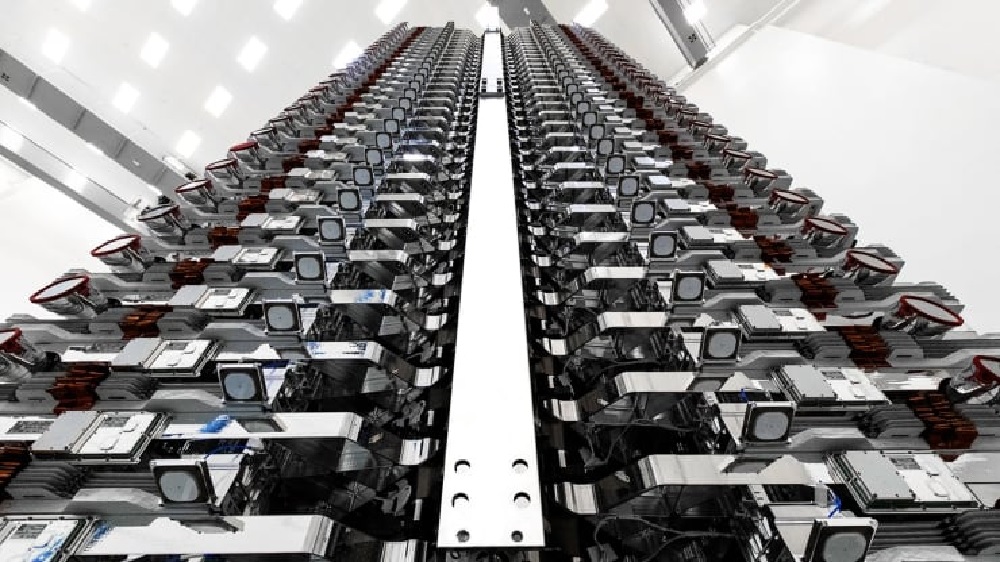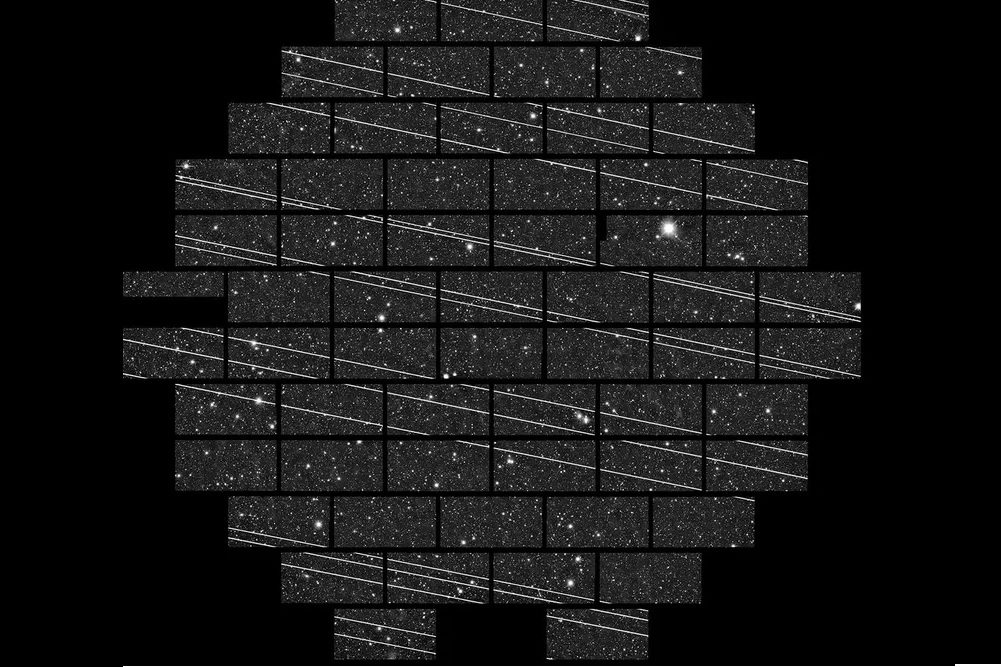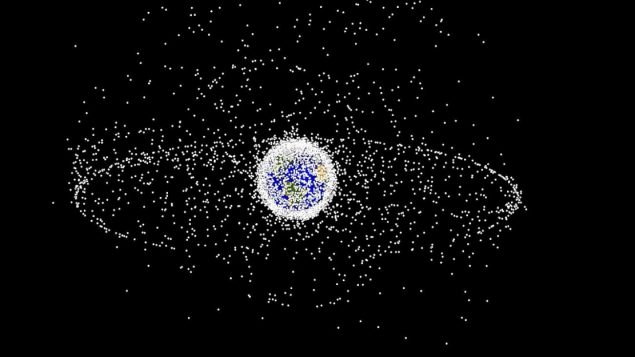Too much reflection; difficult to detect incoming asteroids, meteors
On a clear night, perhaps while camping or out in the country away from city light pollution, you look at the sky and marvel at the stars.
You might also see one of the stars moving across the sky, or two, or three or more, only to realize it’s light reflecting off a satellite or perhaps the space station.
In fact the sky above the Earth is quite crowed with literally thousands of objects in various orbits circling the globe, ranging from satellites new and old, lost astronaut tools, debris from satellites that have smashed into each other, to a few thousand remaining copper needles.
The latter were part of a long forgotten 1963 project by the U.S to improve communications by using the half-billion thin copper needles as a communications antenna in a ring around the Earth. Most, but not all have since burned up re-entering the atmosphere. It is thought some clumped together and still circle the planet along with the satellite canister that dispersed them.
Latest estimates are that there are some 3, 000 new and old satellites orbiting, amid some 23,000 other bits larger than a grapefruit.
For astronomers this space junk, more rightly called “orbital debris” is causing a bit of an issue for them.
That issue is expected to only increase with companies like SpaceX having been approved for 12,000 small satellites as part of its ‘Starlink’ system, with another 30,000 waiting for approval.
While reflections from the satellites already in orbit posing a problem for astronomers, the Starlink satellites would be even brighter as they are in lower orbit. Estimates are that by Christmas this year there will be some 1,000 Starlinks in orbit and visible in the northern sky in the couple of hours after sunset and before sunrise.

A stack of StarLink satellites ready for launching, 60 per launch ( SpaceX).
The concern of constellations of reflective satellites may be more than just an annoyance.
Samantha Lawler, assistant professor of astronomy, University of Regina, wrote in a artical that while professional astronomers and amateur astro-photographers will be adversely affected by the reflections from all these satellites there is a far greater concern, “ Discoveries of hazardous near-Earth asteroids will be particularly devastated by the hundreds of Starlinks confusing their targets, leaving Earth more vulnerable to world-altering impacts”

Starlink satellites streak across the night sky imaged by the DELVE Survey of Cerro Tololo Inter-American Observatory, specialized in detection and observation of the faintest galaxies. (National Optical-Infrared Astronomy Research Laboratory/CTIO/AURA/DELVE, -cc)
Of course not only SpaceX, but tech giants like Amazon and others are also planning new satellites and new clusters. While StarLink will orbit low enough so that a dead satellite would eventually fall back to Earth, the low Earth orbit (LEO) is already a very crowded environment
Another issue is the probability of crashes creating more debris on entirely unpredicted trajectorys which could cause a chain reaction of crashes. NASA scientist Don Kessler proposed this concern as far back as 1978 saying that the cascading crashes and debris could result in making space unusabe for decades. What was not know then was our current dependence on satellites for everything from communication to GPS, surveying, farming, in fact almost everything we do is connected in some way to satellites. If the Kessler Syndrome were to occur it would have a devastating effect for activities on Earth.
Right now the only legal obligation is that a country, or company (as most launches now are for private commercial purposes) must clean up debris from their venture where and when it falls to Earth. As for the debris and dead satellites still orbiting, there are no rules for recovery and removal.
Many in the space community are now saying a long-term view should be adopted with regulations for space before the situation becomes uncontrollable.
additional information-sources
- The Conversation: Leboucq/Graner: May 26/20: The collateral damage from Elon Musk’s StarLink satellite fleet
- The Conversation: S Lawler: Nov 17/20: SpaceX’s StarLink satellites are about to ruin stargazing for everyone.
- Space Legal Issues: Kessler Syndrome
- NASA: NEO close Earth approaches
- The Astronomical Journal: A Tyson et al: Oct 27/20: Mitigation of LEO satellite brightness and trail effects on the Rubin Observatory LSST
- The Astrophysical Journal Letters: JC McDowell: Apr 6/20: The low-Earth Orbit satellite population and impacts of the SpaceX StarLink constellation.
- Wired: J Hanson: Aug 13/13: The forgotten Cold War plan that put a ring of copper around the Earth







For reasons beyond our control, and for an undetermined period of time, our comment section is now closed. However, our social networks remain open to your contributions.